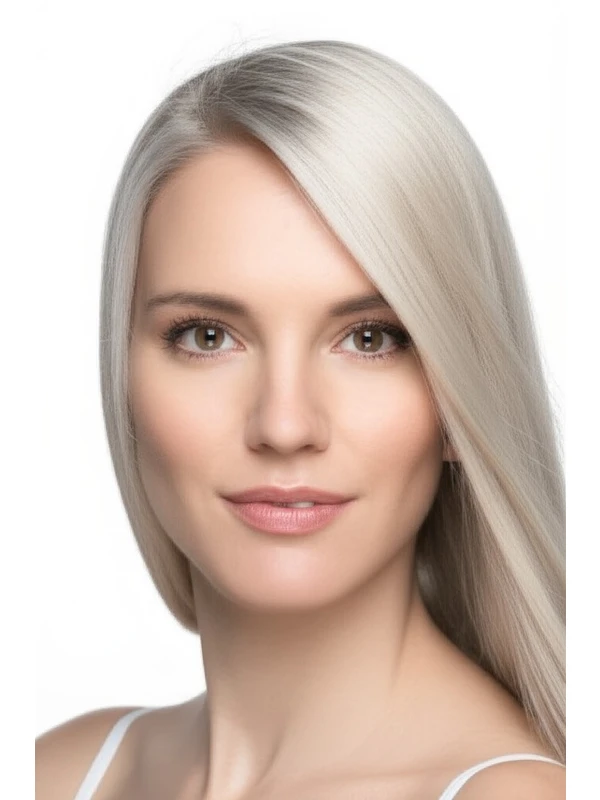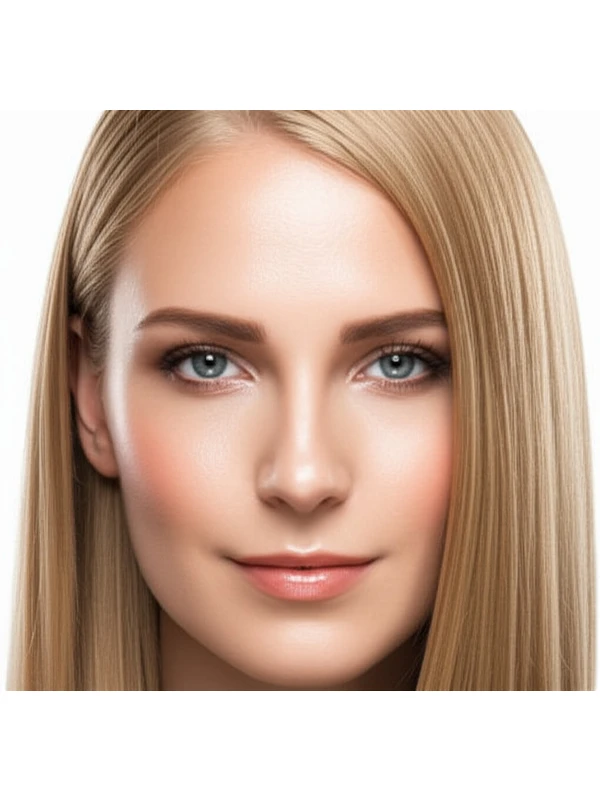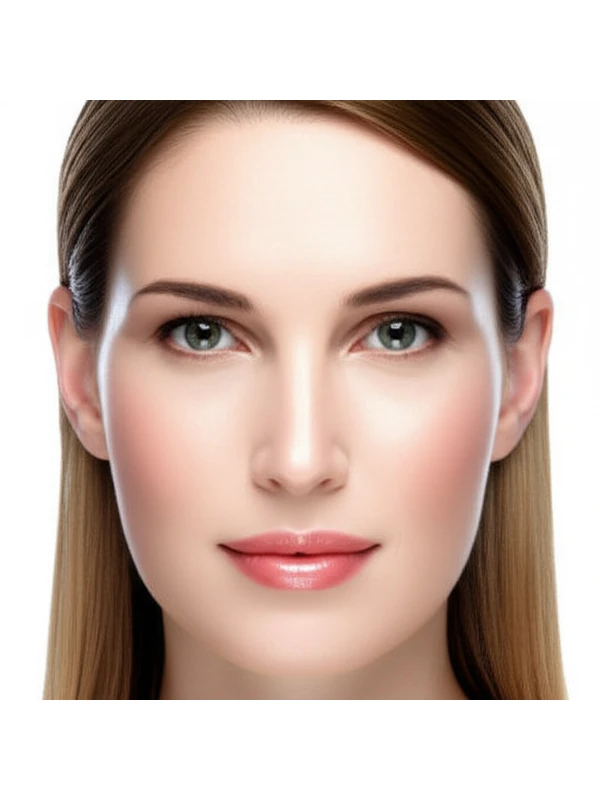#Bleach and Tone: A Complete Guide
Bleach and tone is a popular hair coloring technique that creates bright, customized color results. It’s more involved than just applying color, but the payoff can be stunning. Here's everything you need to know.
#1. What is Bleach and Tone? How Does it Work?
Bleach and tone involves two main steps: lightening your hair with bleach (also called developer) followed by depositing a toner or gloss.
- The Bleaching Process: Bleach opens the hair cuticle—the outer layer of the hair shaft—to remove natural pigment. The strength of the bleach (determined by volume of developer and bleaching powder/cream used) dictates how much color is lifted. Multiple sessions might be needed for darker hair.
- Toning/Glossing Process: After bleaching, your hair likely has brassy or yellow undertones. Toner or gloss neutralizes these tones with pigments like violet or blue to achieve the desired final shade (e.g., icy blonde, rose gold). Toners are typically less permanent than full color and deposit pigment only; glosses add shine and condition while depositing pigment.
- Tools & Placement: The stylist uses foils (or balayage/freehand techniques – see comparison section) to isolate sections of hair for bleaching. Precise placement is crucial, affecting the final look. Timing depends on natural hair color, desired lightness, and hair health; it's constantly monitored by the stylist.
#2. Best Use Cases: What Can Bleach and Tone Achieve?
Bleach and tone can achieve a wide range of looks:
- Dimension & Brightness: Creates highlights and lowlights for depth and visual interest.
- Root Blur/Shadow Root: Achieves a softer transition from darker roots to lighter ends, minimizing the "root regrowth" appearance.
- Face-Framing Highlights: Brightens around your face to accentuate features.
- Color Correction: Corrects previously unwanted tones or color mistakes (often requires multiple sessions).
- Full Blonde Transformation: Lifts hair significantly for a complete blonde look, though this is the most damaging option and needs careful assessment.
- Pastel Colors: Bleach provides the necessary lightness to achieve pastel shades like lavender or baby blue.
#3. Who Suits Bleach and Tone? Considerations & Compatibility
Not everyone is a suitable candidate for bleach and tone. Careful consideration of these factors is essential:
- Natural Hair Color Level: Works best on levels 3-6 (light brown to dark blonde). Darker hair (levels 1-2, black or very dark brown) requires more bleaching sessions which increases damage risk.
- Undertones: Cool skin tones generally look better with cooler blondes (ashy/icy), while warmer skin tones complement golden or honey blondes. Your stylist can help determine your undertone.
- Hair Type & Texture:
- Straight Hair: Bleaches evenly, but damage is more noticeable.
- Wavy Hair: Can be prone to dryness and breakage; requires extra conditioning.
- Curly/Coily Hair: Requires extreme care due to fragility; often best suited for gentler lightening techniques or limited bleaching. Porosity plays a crucial role (high porosity hair lifts quickly but loses moisture easily).
- Fine Hair: Can be more fragile and prone to breakage.
- Thick/Dense Hair: Requires more bleach and toner, increasing processing time and cost.
- Hair Length: Longer hair requires more product and time, impacting the price.
- Lifestyle: Consider your commitment to maintenance (see section 5). Frequent salon visits are needed to maintain color vibrancy and overall health.
#4. Bleach and Tone vs. Similar Techniques: What's the Difference?
Understanding these differences is key to choosing the right technique for your desired look:
- Balayage: Hand-painted highlights, creating a soft, blended effect with less defined lines. Less damaging than foiling but can be harder to control precision.
- Foilyage: Combines balayage painting with foil wrapping to intensify the lift and create more brightness. Offers greater control over placement compared to traditional balayage.
- Highlights (Traditional Foils): Classic technique using foils for precise, defined highlights. Can be harsher looking than balayage or foilyage if not expertly done.
- Root Smudge: A blending technique applied after highlights or a previous bleaching session to soften the demarcation line between roots and ends. Doesn't involve bleach itself but complements a bleached look.
- Shadow Root: Similar to root smudge, creates an intentional darker base for contrast with lighter lengths.
#5. Maintenance & Longevity: What To Expect
Bleach and tone requires ongoing care:
- Salon Timing: Expect touch-ups every 6-12 weeks, depending on regrowth and toner fade.
- Toner/Gloss Refresh: Toners typically last 4-8 washes; glosses can last slightly longer. Regular refreshing maintains the desired color.
- Grow-Out Behavior: The line of demarcation between bleached hair and natural growth becomes more visible over time, requiring strategic root blending or shadow roots.
- Budget/Time Planning: This is an investment! Expect to spend $150-$400+ per salon visit (depending on location, stylist experience, and hair length). Time commitment varies from 2-5 hours per session.
#6. At-Home Care Tips: Keeping Your Color Vibrant & Hair Healthy
- Wash Cadence: Wash your hair less frequently (2-3 times a week) to preserve color and moisture.
- Heat Protection: Always use heat protectant spray before using styling tools like blow dryers, straighteners, or curling irons. Heat exacerbates damage.
- Color-Safe Products: Use shampoos and conditioners specifically formulated for colored hair; sulfate-free options are generally best. Purple shampoo helps neutralize brassiness between salon visits (use sparingly!).
- Deep Conditioning: Incorporate deep conditioning masks weekly to replenish moisture and strengthen the hair shaft.
- Avoid Chlorine: Chlorine can strip color and dry out your hair. Wet your hair with fresh water before swimming, and use a swim cap if possible.
#7. Pros & Cons: Weighing the Options
Pros:
- Highly customizable color results.
- Adds dimension and brightness to the hair.
- Can correct previous color mistakes.
- Creates a long-lasting look (with proper maintenance).
Cons:
- Potentially damaging to hair, especially with multiple sessions or high volumes of developer.
- Requires significant time and financial investment.
- High maintenance – frequent salon visits are necessary.
- Can be difficult to achieve at home without professional experience.
#8. Salon Consultation Script: Questions Your Stylist Will Ask
Your stylist will ask questions to determine if bleach and tone is right for you, and how to tailor the process:
- What is your current hair color level?
- Do you have any previous color treatments on your hair? If so, what were they?
- What are your desired results – can you show me some inspiration photos?
- Are there any areas of your hair you want to focus on (face-framing, root blend)?
- How much time and money are you willing to invest in maintenance?
- Do you have any concerns about damage or sensitivity?
- What is your typical styling routine?
#9. FAQs: Your Bleach & Tone Questions Answered
- Can I bleach my hair at home? While possible, it's risky. Professional stylists are trained to assess hair health and use appropriate products safely. Incorrect application can lead to severe damage or uneven color.
- How much will this cost? Prices vary widely based on location, stylist experience, product quality, and your hair length/density. Expect a range of $150 - $400+.
- How long does bleach and tone take? Typically 2-5 hours, depending on the complexity of the process.
- Will my hair be damaged? Bleaching always causes some level of damage. The key is to minimize it with proper technique, conditioning treatments, and careful aftercare.
- How often do I need a toner refresh? Every 4-8 washes, or as needed to maintain your desired tone.
- What’s the difference between a toner and a gloss? Toners primarily change color; glosses add shine and condition while also depositing pigment. They can be used together for optimal results.
- Can I get bleach and tone if my hair is already colored? Possibly, but it requires careful assessment by a professional to avoid unexpected reactions or damage. It's often more complex than starting with virgin hair.
- What should I do if my hair feels dry after bleaching? Deep condition regularly, use leave-in conditioners, and consider protein treatments (but don’t overdo it – too much protein can also cause issues).


